Reviews
Midad: The Public and Intimate Lives of Arabic Calligraphy at Dar El-Nimer
Midad: The Public and Intimate Lives of Arabic Calligraphy considers the role of calligraphy as a foundational art form from within (and beyond) the central Arabo-Islamic region, to explore its political, private, devotional and poetic uses in multiple contexts.' Here, Ibraaz Contributing Editor Reema Salha Fadda reviews the exhibition, the third at Dar El-Nimer.

Polyphonic Worlds
Contour Biennale 8
'Curated by Natasha Ginwala, the eighth edition of the Contour Biennale proposes two themes separated by a colon that provokes the visitor to puzzle the relationship between them: Polyphonic Worlds: Justice as Medium.' Erika Balsom reviews the Contour Biennale, held in Mechelen, Belgium, and finds practices of diverse provenance and sensibility that explore worldmaking and the law, often taking up research-based methodologies within a broadly documentary mode, with twenty-five artists across six venues.
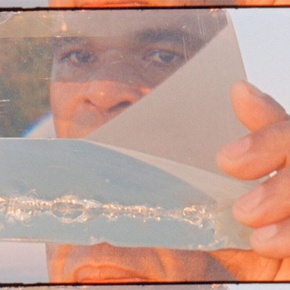
Act I: Sharjah Biennial 13
'The 2017 Sharjah Biennial (SB13), Tamawuj, curated by Christine Tohme...seems to unite the geopolitical and institutional concerns of the Sharjah Biennial's previous two editions in order to, as the exhibition statement explains, 'mobilise ongoing conversations'. This thematic expansion has been articulated both conceptually and physically, with SB13 taking place across Sharjah, Beirut, Dakar, Ramallah, and Istanbul between October 2016 and October 2017, with the help of four interlocutors.' Ibraaz Senior Editor Stephanie Bailey reviews Act I of SB13, which runs in Sharjah until June 2017.
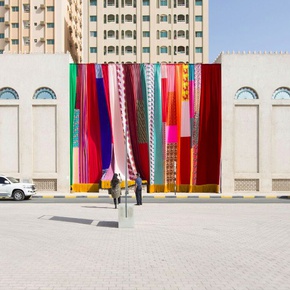
Recollections
Notes on a film by Kamal Aljafari
'What do we go to see when we say we are going to the cinema (or to bed carrying a laptop) to see the film Recollection (2016) by Kamal Aljafari?' writes Adania Shibli in this close reading of the Palestinian director's most recent film. 'The film, at the centre of which is the city of Yafa or Jaffa, emanates from a terrain that, at the outset, is reined by loss, constraints, impossibilities, and inaccessibilities, which will soon be transformed through an extraordinary cinematic endeavour, into a creative force.'
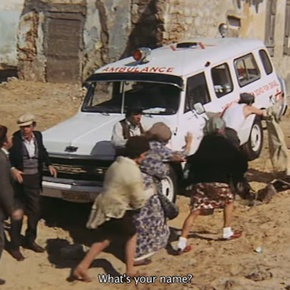
Pattern Recognition at the Mosaic Rooms
Pattern Recognition at Mosaic Rooms in London presented the work of five Palestinian artists, all of whom were shortlisted for the 2016 A.M. Qattan Foundation Young Artist of the Year award, which provides a platform for early-career artists of Palestinian descent under the age of 30. Contributing artists were mentored by curator Nat Muller, to produce artworks initially displayed in a traditional house in Ramallah during Qalandiya International in 2016.

Beyond Boundaries
Art By Email at Yorkshire Sculpture Park
'It is in the digital realm, in the dissolution of territory and nation, where art and ideas are made free, or so informs the concept proposed by Beyond Boundaries: Art By Email, an exhibition that brings art from the Middle East to the North of England.' Siobhan Forshaw examines the exhibition and reflects on its questioning of the function and efficacy of border procedures, and its limits on creativity.

Qalandiya International Report: Amman
'The importance of expanding Qalandiya International to other cities lies mainly in re-thinking what constitutes Palestinian art, as well as how artists in the diaspora choose to connect with their Palestinian artistic and political identity,' writes Yazan Ashqar, in this review of Sea of Stories, the Amman-based exhibition held as part of the third iteration of Qalandiya International: This Sea is Mine.
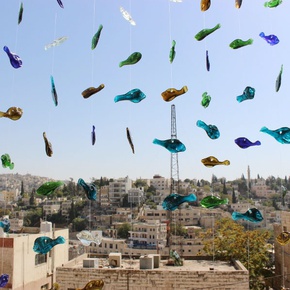
Both Sides of the Curtain
Meeting Points 8
Laura Cugusi describes '[t]he eerily quiet upward alleys of the Ixelles neighbourhood in Brussels', home to La Loge, an art space hosting the second chapter of the eighth edition of Meeting Points, Both Sides of the Curtain, which ran from 7 to 17 December 2016. The first chapter took place in Cairo in May 2016, and the third will be held in Beirut in April 2017.
Curated by Malak Helmy and Raimundas Malasaukas and featuring 23 artists, the exhibition for the Brussels chapter included a four-day series of 'live acts' over three floors of the venue, under a broad set of loosely related themes, such as dreams, sleep, surface, fantasy, and movement.
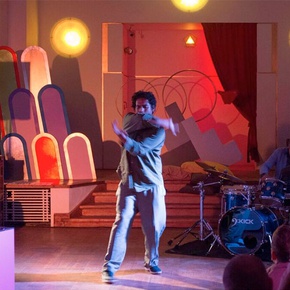
Questions of Collectivity in the Absence of Connectivity
On Qalandiya International 2016 in Ramallah
'While the intention behind Qalandiya International is subversive,' writes Shuruq Harb, 'it is still weighed down by the heaviness and sadness of its name.' In this reflection and response to Qalandiya International 2016: This Sea is Mine, Harb discusses the biennial, its challenges and effects, through a series of works displayed within it. Through individual and collective practices, she examines the 'spaces of return' that recur as one of QI's core themes.
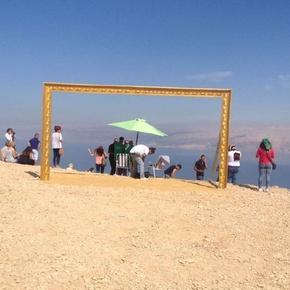
Al Araba Al Madfuna
Wael Shawky at the Fondazione Merz
'Wael Shawky's films are almost never exhibited on their own.' writes Dan Jakubowski, of the artist's latest exhibition, Al Araba Al Madfuna, at Fondazione Merz, Turin. 'Based on short stories by Mohamed Mustagab, an Egyptian author...Shawky adapts Mustagab's prose in a startling and sometimes deeply unsettling way...a dystopian world in which tradition has gone sour.'
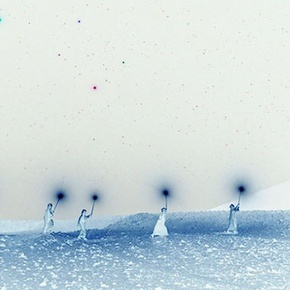
Mustafa Hulusi
Negative Ecstasy at Dirimart, Istanbul
Tom Snow reviews Mustafa Hulusi's latest exhibition, Negative Ecstasy, curated by November Paynter, for Dirimart's recently-opened space in Istanbul. Hulusi – British-born, of Turkish-Cypriot descent – invokes the work of French literary critic Georges Bataille, in order, as Snow notes, to maintain an allegorical status in which an image becomes a site of inquiry. 'Rather than being markers of the artist's biography however, the deceptive simplicity of visual gestures renders singular or straightforward meanings unstable.'
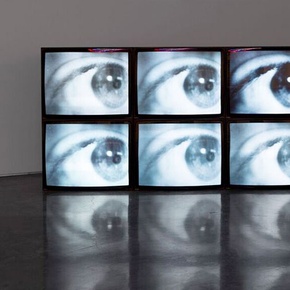
When Art Becomes Liberty
The Egyptian Surrealists (1938–1965)
The short-lived Egyptian Surrealist movement is having a popular moment, with three concurrent – and unrelated – exhibitions taking place in Paris, Sharjah, and Cairo. The Cairo iteration, on display at the Egyptian Ministry of Culture's Palace of Arts, was the second part, that began with a conference hosted by the American University in Cairo in November 2015, with a series of publications forming the final component. Alexandra Stock reviews this exhibition, questioning the nature of canonization with art histories.

The 4th Aflam International Festival of Arab Cinema
Natasha Marie Llorens report from The 4th Aflam International Festival of Arab Cinema, Marseille, launched as part of the city's European Capital of Culture in 2013. For this iteration, curator Delphine Leccas and Aflam director Solange Polet argue that the role of Arab cinema – and by extension that of the festival – is, in part, to participate in a struggle for social justice both in the Arab world and in Europe.
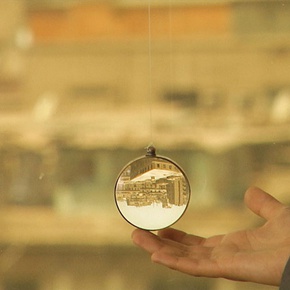
Art et Liberté
Rupture, War and Surrealism in Egypt (1938–1948) at the Centre Pompidou
Art et Liberté: Rupture, War and Surrealism in Egypt (1938–1948) at the Centre Pompidou in Paris is the culmination of six years of research, initiated by guest curators Sam Bardaouil and Till Fellrath. On display is a comprehensive exhibition about the Egyptian Art and Liberty group (A&L) – an eclectic group of artists, writers and intellectuals prominent in the 1930s and 1940s. Amina Diab reviews this exhibition, which brings together almost 300 artefacts relating to the group's work.

Off the Record
Nil Yalter at ARTER, Istanbul
Nil Yalter's latest show is centered on immigration, displacement and neglected histories – themes that have defined the artist's practice for decades, as evidenced by an exhibition constructed as a retrospective over two floors that includes early digital experiments to recent oil paintings. Rasit Mutlu reviews the exhibition Off the Record, from ARTER, Istanbul.
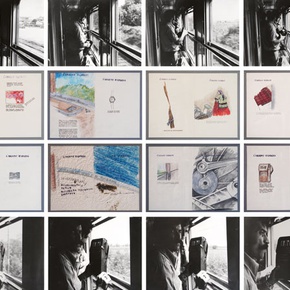
Casting Stories in Transit
Katia Kameli at the Mosaic Rooms
What language do you speak stranger?, the title of Katia Kameli's exhibition at the Mosaic Rooms, presents three separate installations that explore distinct but interrelated literary forms, ranging from storytelling, translation and the novel. On display is the transmigration from the spoken or written tradition to the gallery space, and the consequent problematics of language, translation and transmissibility.
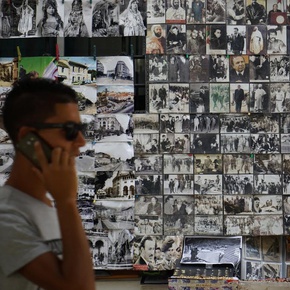
The Portrait is an Address
Hassan Khan at Beirut Art Center
The Portrait is an Address is the latest exhibition by Hassan Khan, at Beirut Art Center. A selection of thirteen works, the display presents a 'melancholic' point of view; one, as Jenifer Evans writes, that seems to speak of loss and a sense of intense regret. However, the cryptic nature of Khan's work allows for a nimble reading of the subjects at-hand, sealed by the artist's authorial hand.
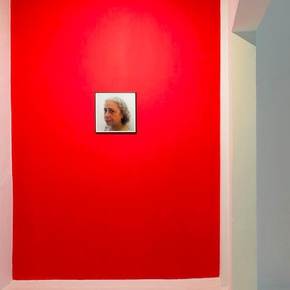
The Writing of Art
Inspired by calligraphy
The Writing of Art, which ran at the Ismaili Centre, London, as part of the Nour Festival of the Arts between October and November, brought together six contemporary artists whose work is inspired by traditional Persian and Arabic script. The exhibition examined the plasticity between word, idea, and image, juxtaposed as discrete visual systems to challenge the increased sense of a homogenous global identity.
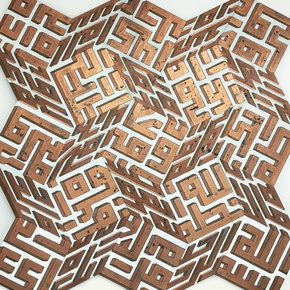
Space Refugee
Halil Altındere at Neuer Berliner Kunstverein, Berlin
'While the European Union and Turkey are discussing where to settle refugees and Turkey is insisting on its contentious politics, Halil Altındere, like David Bowie singing Life on Mars, looks at the sky and contemplates receiving salvation in space, a supposed no man's land, in the exhibition Space Refugee at Neuer Berliner Kunstverein Berlin. This exhibition of new work is premised on sending refugees to Mars and researching the potentiality of starting a civilization from scratch.'
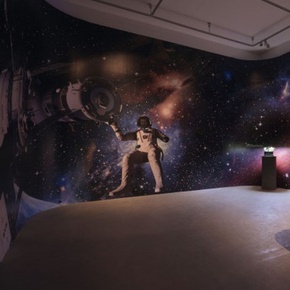
Invisible Threads
Technology and Its Discontents
Melissa Gronlund reviews Invisible Threads: Technology, at the NYU Abu Dhabi Art Gallery and finds that it is presented with 'a lack of contextualization [that] places the show within a very post-internet critique: the idea that the artwork's circulation helps determine its very meaning or political potential...And so, a work of art [becomes] an index of its own tradition.'
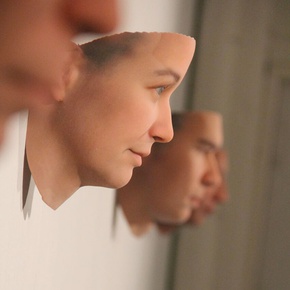
Portrait Sessions
Vikram Divecha at Tashkeel
Dubai-based Vikram Divecha is one of the few artists working in the Middle East whose practice is socially engaged. Inspired by the urban expansion in the UAE, Divecha regularly collaborates with institutions, infrastructures and communities, identifying and capitalizing on hidden seams within these systems to work to disrupt the status quo. For Portrait Sessions at Tashkeel, the artist inverted the traditional structure of the titular studio exercise: soliciting non-artists to paint his portrait.
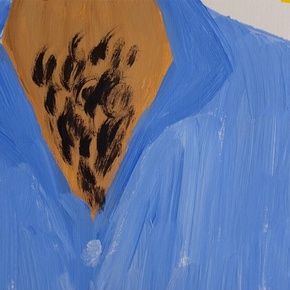
Black Friday
Sophia Al-Maria at the Whitney Museum of American Art
Stephanie Bailey reviews Black Friday at the Whitney Museum of American Art, New York, artist Sophia Al-Maria's first solo exhibition in the United States. The show, based around a film shot on drone in Qatar, examines the idea of 'disaster capitalism' encoded into the shopping malls of the world, taking inspiration from the apocalyptic science fiction of JG Ballard.
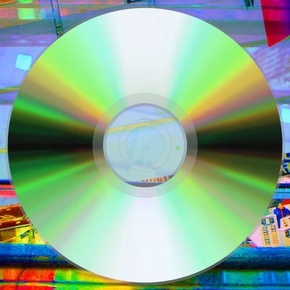
War of Terror
Edmund Clark at the Imperial War Museum, London
Coming in the immediate wake of the publication of the Chilcot Report, the official inquiry into Britain's role in the Iraq War, Joy Stacey reviews War of Terror, Edmund Clark's first UK solo show, opened at the Imperial War Museum in London: '...an immaculately researched deconstruction of the hidden sites of incarceration and control in the so-called War on Terror, examining the spaces of terror that the conflict in and beyond Iraq has perpetuated'.
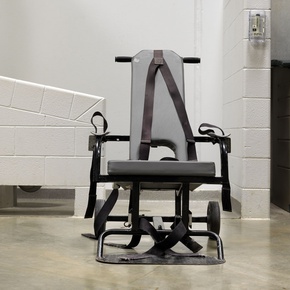
Sketchat: Min Hone Wah Honak
The Sketches of Mahmoud Al Rifai at FADA 317
In this review from Amman, Kyle Craig looks at an exhibition of work by Jordanian artist Mahmoud Al Rifai, whose work presents urban landscapes, in Jordan as well as throughout Europe, created in pen and watercolour and then digitally manipulated.
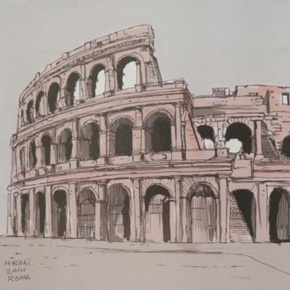
The Weight of the World
Etel Adnan at Serpentine Galleries
Aimee Dawson reviews The Weight of the World, a survey exhibition of the work of the 91-year old Lebanese artist Etel Adnan at Serpentine Galleries, London. 'This survey is an effective introduction to Adnan's practice', writes Dawson, 'that also offers old admirers an alternative perspective on what are now classic pieces of art'.
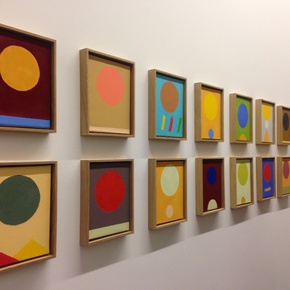
Chronographia
Gülsün Karamustafa Retrospective at Hamburger Bahnhof
Göksu Kunak reviews Chronographia, Gülsün Karamustafa's retrospective exhibition, currently on display at Berlin's Hamburger Bahnhof. With 110 works dating back to the 1970s, from paintings, installations and videos, this thematic retrospective offers a multi-temporal, multi-layered insight into Karamustafa's practice, which has consistently dealt with the traumatic affects of nation building in Turkey.
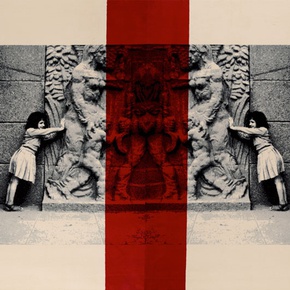
La Mano de Dios
Rayyane Tabet at Museo Marino Marini
La Mano de Dios is a solo show by Rayyane Tabet, curated by Leonardo Bigazzi, at Museo Marino Marini, Florence. It concludes a series that Tabet has been forming for over ten years: Five Distant Memories: The Suitcase, The Room, The Toys, The Boat and Maradona (2006–2016), 'a dense and versatile body of work', writes Antonia Alampi, 'that merge historical facts with personal memories...Tabet is a storyteller who plays with facts, anecdotes stories, and myths.'
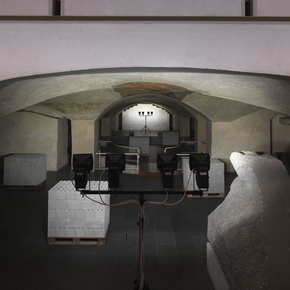
Between Structure and Matter: Other Minimal Futures
At Aicon Gallery, New York
Between Structure and Matter: Other Minimal Futures at Aicon Gallery, New York, features the work of eleven artists, of varying generations, from Bangladesh, India, Madagascar, Pakistan, Tunisia, and the UAE. Curated by Murtaza Vali and Prajit Dutta, the exhibition examines the parallels of abstraction and Minimalism by artists from North America and South Asia, North Africa and the Middle East. Fawz Kabra reviews.
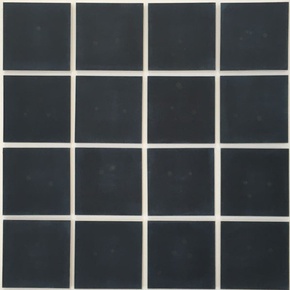
The Arab Nude
The Artist as Awakener at AUB
Anneka Lenssen reviews The Arab Nude: The Artist as Awakener, currently on display at the American University of Beirut, and finds it 'a dense...[but] rewarding exhibition' that examines the nude as a political act, and one speaks volumes about the impact and hierarchies of power.
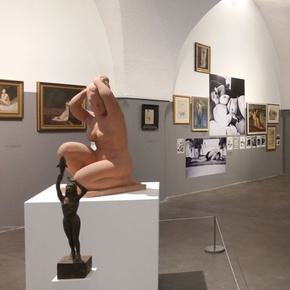
Showroom Dummies
The 9th Berlin Biennale of Contemporary Art
Jens Maier-Rothe reviews the ninth edition of the Berlin Biennale, curated by New York-based collective DIS, which, he write, '...seems to be under the aegis of the ancient god, [Janus]...The Present in Drag is all about new beginnings and our shifting perception of time.' An event that has been 'anticipated by many as the happy end of a young hype known as 'post-internet art',' Rothe assimilates himself in a presentation that is 'more mindset than movement'.
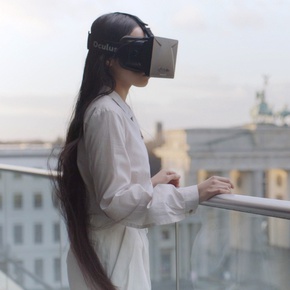
Mass Individualism: A Form of Multitude
At Ab Anbar Gallery
Rahel Aima reviews Mass Individualism: A Form of Multitude, an exhibition at Tehran's Ab Anbar gallery that brought together nine artists of Iranian origin. Curator Azadeh Zaferani invokes the Hellenic polis and contrasts this ideal within the context of Iran, a country where the tension between public and private remains ever fraught.

Globale: Allah’s Automata
Rozemin Keshvani reviews GLOBALE: Allah's Automata (2015–2016) at ZKM Karlsruhe, Germany, an exhibition that offers a brief excursion into the golden age of Islamic culture, focusing on automated mechanical devices developed by Muslim engineers between the ninth and thirteenth centuries. The exhibition initiates an archaeology of technology and automata that implicitly renegotiates the question 'How did the Renaissance begin?', or more specifically, 'Was there a renaissance before the Renaissance?'
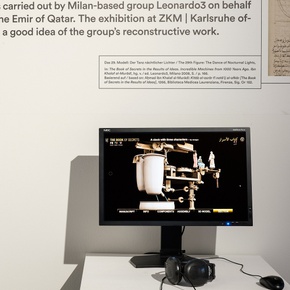
Mona Hatoum at Tate Modern
Nicola Baird reviews the first UK survey exhibition of the work of Mona Hatoum, at Tate Modern, organized in collaboration with the Centre Pompidou and Musée National d'Art Moderne, Paris and the Finnish National Gallery/Museum of Contemporary Art Kiasma, Helsinki. The show, writes Baird, is 'a challenging, confrontational, and inherently contradictory experience'.
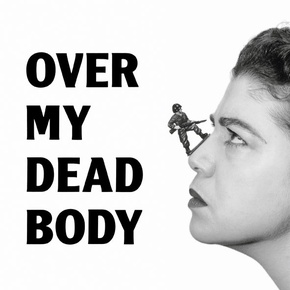
Seeking Togetherness
The 37th EVA International
Clelia Coussonnet reviews the 37th iteration of EVA International, billed as 'Ireland's Biennial', in Limerick. Curated by Koyo Kouoh, founding artistic director of RAW Material Company Dakar, this edition of the biennial takes as its starting point practices of Irish language, poetry and storytelling as a way of understanding imprints of power structures, in advance of the city's launch as the European Capital of Culture 2020.
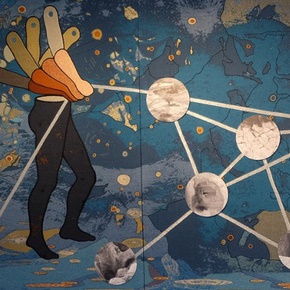
Sound and Vision
Earshot by Lawrence Abu Hamdan, Portikus, Frankfurt
Ajay Hothi reviews Earshot, Lawrence Abu Hamdan's first solo show in Germany. This exhibition of new work draws on original research conducted by the artist, with London-based research group Forensic Architecture, examining the killing of two Palestinian teenagers in Beitunia by an Israeli soldier on Nakba Day 2014.
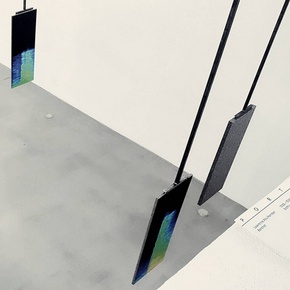
Experiencing ‘Badke’
KVS Theater in Brussels
Artist Samah Hijawi reviews Badke, a performance of a contemporary dance interpretation of the Dabkeh, traditionally performed in weddings throughout the Levant. This performance was a collaboration between les ballets C de la B, KVS, and 'ten Palestinian performers, young autodidacts from various disciplines including contemporary dance, hip hop, circus...', at KVS Theater, Brussels.
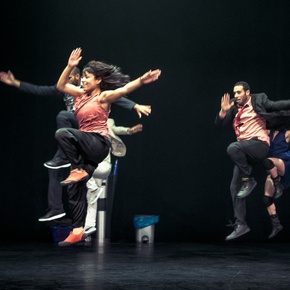
Stéphanie Saadé
Grey Noise Gallery
Rahel Aima reviews a recent exhibition by Stéphanie Saadé at Grey Noise Gallery, Dubai. In this exhibition, the artist evoked memories of experiences of the Lebanese Civil war. 'The past memory is no longer accessible, but now mirrors the present reality,' Saadé explains in a text accompanying the show. 'The key to her childhood home,' writes Aima, 'is stuck, irretrievable like the sword in the stone, in a pile of sand from Dubai.'

Windows on Work
Tarek Al-Ghoussein at Galerie Brigitte Schenk
'Born in Kuwait to Palestinian parents, Tarek Al-Ghoussein's work has long dealt with issues concerning identity and belonging,' writes Cleopatra Goularas. In this review of Al-Ghoussein's most recent exhibition, Windows on Work at Galerie Brigitte Schenk, Cologne, Goularas unpacks a series of the artist's photographs documenting migrant workers' transport buses.
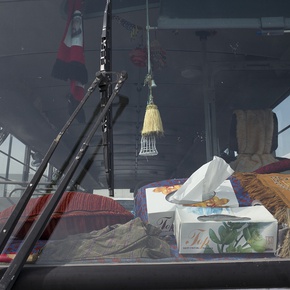
Sounds as if
Downtown Contemporary Arts Festival (D-CAF)
Mai Elwakil reviews the centrepiece exhibition of the fifth iteration of D-CAF, the Downtown Contemporary Arts Festival in Cairo. Curated by Aleya Hamza and featuring the work of six international artists, Elwakil notes the auditory sensations that recur throughout this exhibition and that 'connect what might otherwise seem like a highly interesting yet unrelated group of works', both together and to the sound of the city itself.
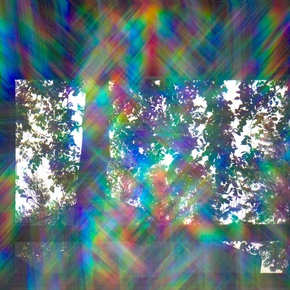
The Sleepwalkers
Rana Hamadeh at The Showroom, London
Ajay Hothi reviews The Sleepwalkers, a new half-hour film by Rana Hamadeh, which premiered recently at The Showroom, London. The film itself is a dramatization of the true story of Raya and Sakina; two sisters who were the first women to be executed by a legal court in the history of modern Egypt. The story of the serial killer sisters is infamous, both as a case of Egyptian legal history, and for lovers of the spiritual and macabre.
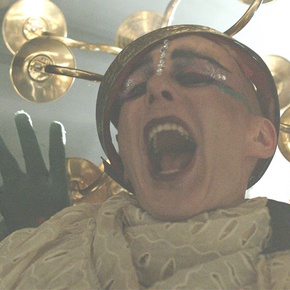
Arab Art Histories: The Khalid Shoman Collection
Artist Samah Hijawi reviews Arab Art Histories: The Khalid Shoman Collection, the latest – and largest – produced by Darat Al Funun. This work focusses entirely on the organisation itself, and discusses, in a range of essays by artists and academics, its collection, which is comprised of over 2000 works from across the Arab and international world, and which represents one of the earliest collections dedicated to contemporary art of the Arab world.
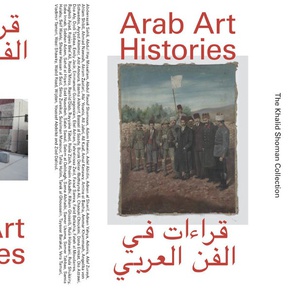
Made in Algeria
Genealogy of a Territory at MuCEM, Marseille
Made in Algeria is an exhibition at the Museum for Europe and Mediterranean Civilizations (MuCEM) in Marseille. The show consists of approximately 200 artworks and documents that have been brought together to assess the core project: dating the country and its culture from the sixteenth century until the second half of the twentieth century.
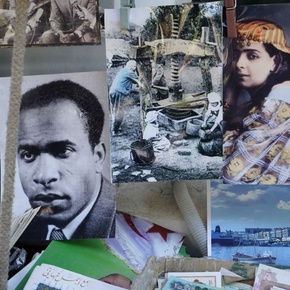
1497
Green Art Gallery
'How does one explore the notion of homeliness in a place like to Dubai that is in constant flux, to say the least?' asks L. İpek Ulusoy Akgül. In this review, Akgül looks at 1497, an exhibition at Green Art Gallery, Dubai, curated by artist Lantian Xie, and featuring work by Hera Büyüktaşçıyan, UBIK, Matheus Rocha Pitta, Jacob Lawrence, Raja'a Khalid, Shilpa Gupta, Danh Vo, Gitanjali Dang, and Deepak Unnikrishnan.
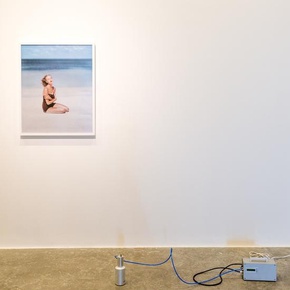
The Great Hall Exhibition
Walead Beshty at The Institute of Fine Arts, NYU, James B Duke House
Daniella Rose King reviews Walead Beshty's participation in The Great Hall Exhibition, a series of shows organized by MA students from New York University's Institute of Fine Arts. 'Anachronism abounds...' she writes, 'each work in the exhibition is concerned with the production and dissemination of the image...from the LED screen, to the inkjet printer and the Fed-Ex boxes that so often transport images – or image making devices – between places.'
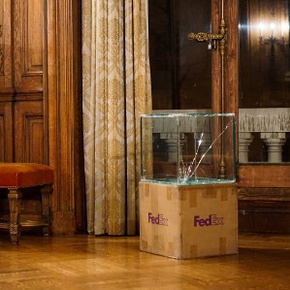
Colony – Latitude
Shady El Noshokaty at Gypsum Gallery, Cairo
Mai Elwakil reviews Colony – Latitude, an exhibition by Egyptian artist Shady El Noshokaty at Cairo's Gypsum Gallery (5 October–25 November 2015). For this show, the artist presented a living sculpture that grew over an eight-week period: a bubblegum-pink mountain range presenting the highest land points in each of his chosen colonies, inspired by a map from 1850, drawing out issues around colonization and architectural space.
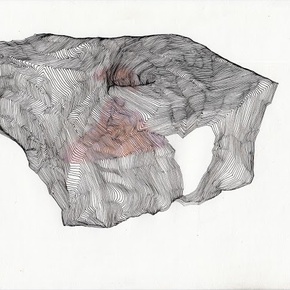
Collapsing Clouds of Gas and Dust
Vartan Avakian at Marfa’
Laurence Cornet reviews Vartan Avakian's first solo exhibition in Lebanon, which also inaugurates Marfa', a new art gallery near Beirut's industrial portside neighbourhood. For this exhibition, Avakian worked with an art conservator and a team of chemistry researchers to create minerals produced from dust collected from the city's abandoned Barakat building: a place with a history tightly associated to the civil war.

Magic, Maybe
Jumana Manna at Chisenhale Gallery, London
Daniel Berndt reviews Jumana Manna's first UK solo exhibition, at London's Chisenhale Gallery, a show that comprises of the artist's first feature-length film, A Magical Substance Flows into Me (2015), as well as presenting a variety of vessel-like sculptures that surround the theatrical space.

Tarek Atoui
At the 41st Aeschylia Festival
Ibraaz Managing Editor Stephanie Bailey reviews three performances by Lebanese artist Tarek Atoui, as part of a series of events for the 41st iteration of the Aeschylia Festival, Greece. These interactive performances, in an crumbling amphitheatre, invited audiences members to make participation a key aspect of the performative process and, Bailey finds, the effect was haunting.
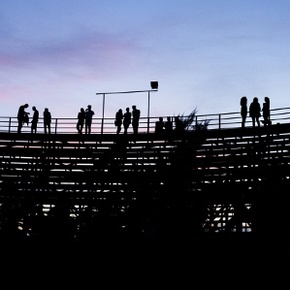
SALTWATER: A Theory of Thought Forms
The 14th Istanbul Biennial 2015
The 14th Istanbul Biennial is as broadly defined as it is integrated into the city, SALTWATER: A Theory of Thought Forms is bound together, according to 'organizer' Carolyn Christov-Barkargiev, by 'one of the most ubiquitous materials in the world'. 'Ubiquity might well speak to the conflicted politics of biennials currently' writes Tom Snow in this review, 'irrefutably caught between the homogenizing processes of neoliberal globalization and the movement against it'.

La Vie Moderne
The 13th Biennale de Lyon
Clelia Coussonnet reviews the 13th Biennale de Lyon, titled La Vie Moderne. Curated by Ralph Rugoff, this exhibition examines the concept of the 'modern', which will run through the next three iterations of the project. Rugoff responds to the invitation by mixing a number of references together, from Charles Baudelaire's poem The Painter of Modern Life (1863) and Jacques Tati's 1967 movie Playtime, to Raymond Depardon's La Vie Moderne (2008), from which this Biennale takes its name.
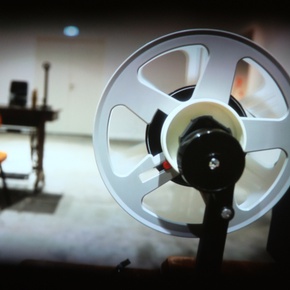
All the World’s Futures
A Review of the 56th Venice Biennale
'Curator Okwui Enwezor has built his career using an inverse technique, scanning the present for signs of a still unsettled past. Alongside the announcement of the theme of his highly-anticipated exhibition...came the tantalizing possibility that we might finally glimpse the curator's vision of what's to come.' Kate Sutton reviews the 56th Venice Biennale, All the World's Futures.

The 5th Thessaloniki Biennale
Between the Pessimism of the Intellect and the Optimism of the Will
Ibraaz Senior Editor Stephanie Bailey reviews the 5th Thessaloniki Biennale, an exhibition that played out with the backdrop of the Greek economic crisis, but finds that its concerns have much more global effects.
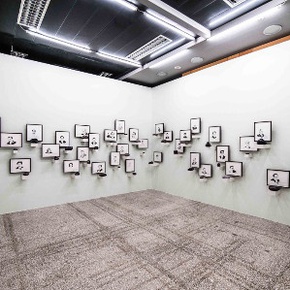
Accented
Maraya Art Centre
Kareem Estefan reviews Accented, a recent exhibition at the Maraya Art Centre, Sharjah. Featuring the work of artists including Lawrence Abu Hamdan, Jaret Vadera, GCC, and Farah Al Qasimi, among others, this show is a deeply discursive examination of the voice, while retaining a playful, and sometimes whimsical, tone.
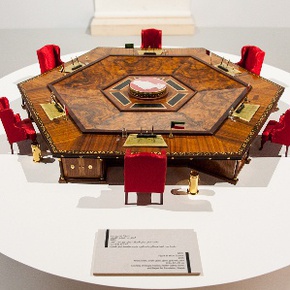
The Politics of the (im)Possible
Sharjah Biennial 12: The past, the present, the possible
Nat Muller reviews the 12th Sharjah Biennial (5 March–5 June 2015) and navigates between the 'whispers and gestures rather than [the] outspoken and bold statesments' of the event. Outlining some of the standout works selected, Muller presents a brief critique of the biennial, its curation, and its contexts.

Past Disquiet
Narratives and Ghosts from the International Art Exhibition for Palestine, 1978, at MACBA
Samah Hijawi reviews Past Disquiet: Narratives and Ghosts from the International Art Exhibition for Palestine, 1978, an archival and documetary exhibition curated by Khristine Khouri and Rasha Salti at MACBA, Barcelona. The show intricately maps an intercontinental milieu of common mindsets of artists and activists who worked together in solidarity with anti-imperialist movements of the 1970's, from France to Iraq to Lebanon to Chile to Jordan to Morocco to South Africa and Japan.
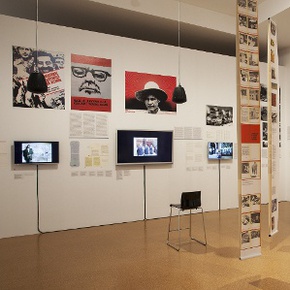
Tout va bien?
'Too Early, Too Late: Middle East and Modernity' at the Pinacoteca Nazionale di Bologna
Too Early Too Late is the second in a series of exhibitions produced in a joint venture between Bologna's yearly art fair and the Ministry of Culture. It follows Il Piedistallo Vuoto (The Empty Pedestal), staged at Bologna's Archeological Museum in 2014. These exhibitions have so far exclusively presented works owned by Italian collections pieced together by curator Marco Scotini, and have both pointed their gaze towards a certain 'East'. The theme of last year's show, for example, was artistic production from Eastern Europe, while this year sieves through the so-called 'Middle East'.
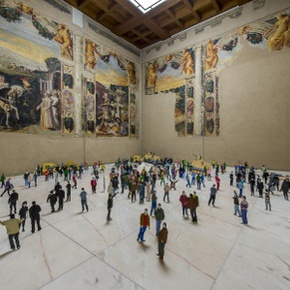
Hassan Matar
Lantian Xie at Grey Noise
Ahmad Makia reviews Hassan Matar by Liantian Xie, at the Grey Noise Gallery. This exhibition examines Dubai's public narratives from a variety of angles: that of the state-sanctioned 'public', 'the parachuting journalist looking for the next sensational story,' and, here, through a constellation of objects and references.
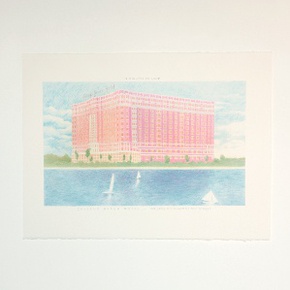
Assembled in Streams of Synonyms
Rana ElNemr at the American University in Cairo’s Sharjah Art Gallery
Mai Elwakil reviews the exhibition Assembled in Streams of Synonyms, a solo show by Rana ElNemr at the American University in Cairo's Sharjah Art Gallery – and encounters a display that presents the characteristics of a daydream, detached from the reality of the everyday and the experience of the art gallery.

Mirror Worlds
Here and Elsewhere at the New Museum
Stephanie Bailey reviews Here and Elsewhere, at the New Museum, New York, a presentation of 45 artists from 15 countries that the New Yorker’s Andrea K. Scott supposed would have sounded like Edward Said’s nightmare’.
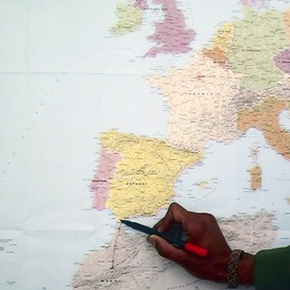
Unedited History, Iran 1960–2014
A Recourse to the Past
Leili Sreberny-Mohammadi reviews Unedited History, an exhibition shown at the Musee D'Art Moderne De La Ville De Paris, one of a recent flourish of Iranian-focused exhibitions being held in the capital. The expansive show charted 50 years of visual culture in Iran through some 200 art works and 26 artists and sought to contribute to current research on the emergence of modernism as well as inviting visitors to contemplate the disruption and disjuncture in the modern history of Iran.
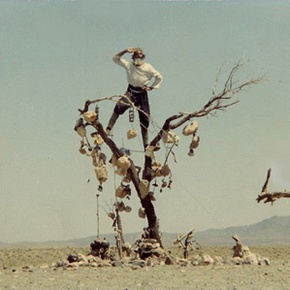
Basma Alsharif: The Doppelgänger
Berlin Documentary Forum 3 at Haus der Kulturen der Welt, Berlin
Jesi Khadivi reviews The Doppelgänger, a film about migrations and intinerancy, from Palestine to the American Midwest, via Kuwait and France. By Basma Alsharif, the film screened at the third Berlin Documentary Forum, Haus der Kulturen Welt, Berlin.
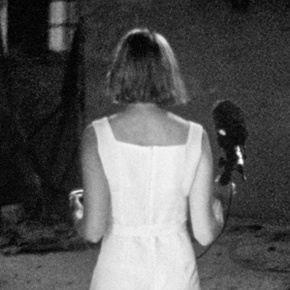
Intervening Space
From the Intimate to the World
Sheyma Buali reviews Intervening Space: From the Intimate to the World, an exhibition curated by Yasmina Reggad of Aria (Artist Residency in Algiers) at The Mosaic Rooms, which showed pieces by six artists of Algerian descent working either in the country or within the diaspora today. Ranging in media, from sound installation to video, etchings, found objects, and installation, each piece expresses spatial meaning in various forms by artists who have experienced the same elements of colonial history, migration and exile
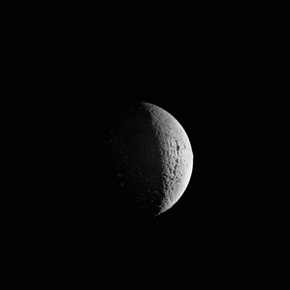
Imed Jemaïel’s Talismanic Paintings/Les tableaux talismans de Imed Jemaïel
Le Dessous des Ratures (Beneath the Crossings Out)
What struck me the most when my eyes met the paintings titled Le Dessous des Ratures (Beneath the Crossings Out) was this hymn to writing, this crazy language made out of a combination of Berber symbols, Aztec art, parchment, an old writing tablet, a manuscript of a contract from times gone by with their famous signatures and all manner of other things. In reality, all these readings that seek to identity the piece anecdotally are secondary in the face of this dilemma: the visual illusion that the artist throws us into with his painting-writings.
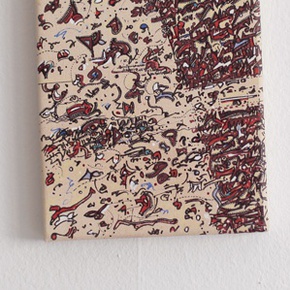
GCC: Achievements in Retrospective
GCC's first US show at MoMA PS1 is a satire and critique of the language and aesthetics of corporate governance. Their take on collectivity operates as an artistic framework through which the group thinks through the terms of the original Gulf Corporation Council (GCC) and mimics them, thus replacing – or substituting – politics with art. Borrowing linguistic cues from badly translated formal Arabic of the real GCC, their work draws from the rituals of government, corporate self-promotion and bureaucracy.
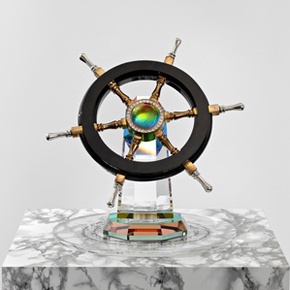
All Mother Tongues Are Difficult
Mounira Al Solh at Sfeir-Semler Gallery, Beirut
All Mother Tongues Are Difficult is Mounira Al Solh's second solo show at Sfeir-Semler Gallery, Beirut (until 19 July 2014). This exhibition is comprised of work that extends Al Solh's existing interest in transience, exile and language, and, here, Kasia Maciejowska examines the emphasis the artist places on the vocal and verbal hazards of individual's miscommunications.
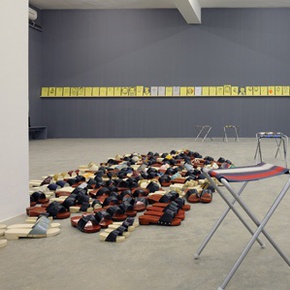
Hassan Khan in Cairo
Downtown Contemporary Arts Festival (D-CAF)
This solo exhibition, an eponymous show by the Egyptian artist Hassan Khan, constituted the entire visual arts program of the Downtown Contemporary Arts Festival (D-CAF), Egypt's only international multidisciplinary contemporary arts festival. Mai Elwakil reviews the exhibition, which presented twenty-one works, made between 1997 and the present, many of which were being shown in Egypt for the first fime.
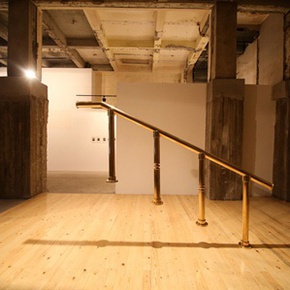
Doha Days
Global Art Forum 8 at Katara Art Center
The 2014 Global Art Forum was an exercise in collapsing space and time. Titled 'Meawhile...History' it was a presentation on the region in which it took place. Before movintg to Dubai, this, the eighth edition of GAF, opened at Doha's Katara Art Center. Here, Sheyma Buali looks back on the proceedings, its aims and outcomes.
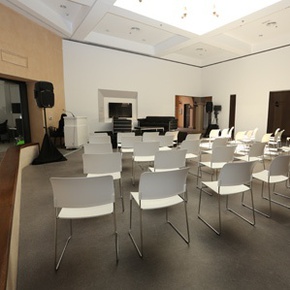
Freedom has no script
Burak Delier at Iniva
Ajay Hothi reviews Freedom has no script, the first UK exhibition by Turkish artist Burak Delier. This show, formed around a commission by Iniva to the artist, uses film and multimedia installation to examine the social structures that govern both the economy and our roles as citizens within it.
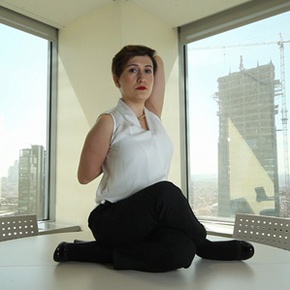
The Revolution Will Not Be Online
33rpm and a Few Seconds by Rabih Mroué and Lina Saneh
Fawz Kabra reviews 33rpm and a Few Seconds (2013), a play by Rabih Mroué and Lina Saneh which creates a fiction centred around the deaths of two Lebanese activists, performed at New York's Asia Society theatre in April 2014. Devoid of any stage actors, the story develops with a narration through their channels of social media.

Come Together
The Sharjah Art Foundation's 2014 March Meeting
For Eungie Joo, curator of the 2015 Sharjah Biennial who presided over the Sharjah Art Foundation's 2014 March Meeting, it was important to invite speakers who 'make art history in front of our eyes'. Ibraaz Editorial Correspondent Nat Muller reports from the sessions, noting its intentions, contentions and and projections for the future.
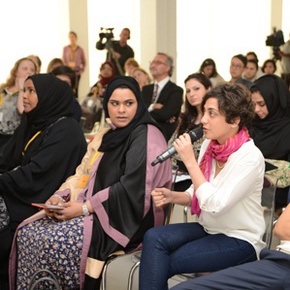
Language Arts
Slavs and Tatars at The Third Line
More than giving meanings to things, and more than simply a form of communication, language is used as a method of control – a promotional tool for nation (image) building. It is also a vehicle to spread freedom and emancipation from the powers that be: government, religion, school, or parenting. Fawz Kabra reviews Language Arts, a solo show by Slavs and Tatars that explores the mutability of communication.
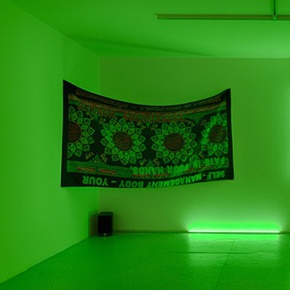
Mouthfeel
Maryam Jafri at Gasworks
Daniella Rose King reviews Mouthfeel, at Gasworks, London. This show, which weaves together a dismaying narrative around 'Big Food', is Maryam Jafri's first UK solo exhibition.
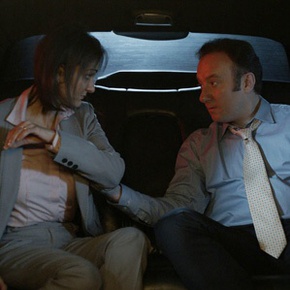
Aerial Abstraction
Jananne Al-Ani, Excavations, at the Hayward Gallery Project Space
Jumanah Younis reviews Jananne Al-Ani's latest exhibition Excavations, at the Hayward Gallery Project Space. Featuring photography and moving image installation, this show examines the media representation and cultural constructions of zones of conflict in the so-called 'War on Terror'.
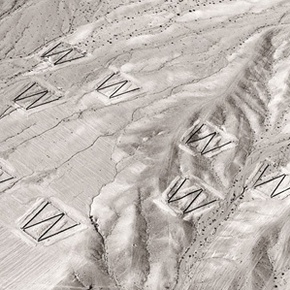
Recalling the Future
Post-Revolutionary Iranian Art at SOAS
Aimee Dawson reviews a recent exhibition at the School of Oriental and African Studies' Brunei Gallery, titled Recalling the Future: Post-Revolutionary Iranian Art. Curated as a rejection of fixed, state-imposed ideas on art practice – a synthesis of political and cultural independence termed 'neotraditionalism' – it featured artworks by 29 Iranian artists, many who were exhibiting in the UK for the first time.

Critical Machines
The vigilance of a critical machine guarantees the smooth and uninterrupted operations of a production chain. It is a machine whose function is to monitor other machines. What is this machine in the art world, and how would it function? Mirene Arsanios reports from Critical Machines, a conference co-organized by Octavian Esanu and Angela Harutyunyan for the American University of Beirut, which took place alongside an exhibition of the same name
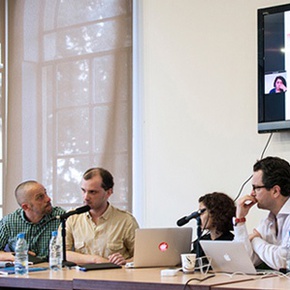
Alt Üst
Cevdet Erek at Spike Island, Bristol
Alastair Cameron attempts to measure out Istanbul artist Cevdet Erek's new exhibition in Bristol, examining the artist's concern with metre, spacing, and rhythm. Just as sounds mingle in space, Alt Üst reconfigures existing works across multiple media forms into a site-specific and collaborative matrix.

We Are What We Eat
The Politics of Food at Delfina Foundation
With the unveiling of its refurbished and expanded space in January 2014, Delfina Foundation launched The Politics of Food, a four-year programme of artistic research and production that invites artists, curators and critics from around the world to respond to the politics of food, agriculture, and the environment. Stephanie Bailey explores a group exhibition, presented under the same title, that coincided with the launch.
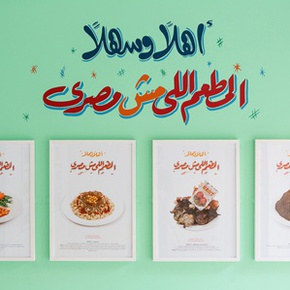
Notes on Women in Iranian Art
A Review
Iran is a country where more than half of university graduates as well as many of its leading contemporary artists are female. Yet, though women entered the canon of modernism in Iranian art with the same vigour as men, albeit fewer in numbers, there is a glaring void of information on them. In most art history curricula, notable female names tend to be missed. Tara Aghdashloo mines through this art history to reveal a gap in Iran's cultural history, with its implications for future generations.

Flash Frozen Fire
Haleh Redjaian at Arratia Beer
Dorothea Schoene examines an exhibition of recent work by Haleh Redjaian at Arratia Beer, Berlin. The artist uses elementary geometric forms and shapes as a means of understanding and subverting tools for the creation of order, and appropriates material to merge a variety of cultural influences, highlighting oppositional tensions and international potentials.
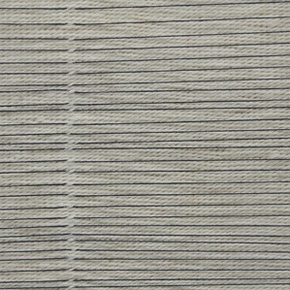
Ways of Un-Seeing
Georgia Kotretsos: SPRING CLEANING and KARFI in Rabat
Nahrain Al-Mousawi looks at two projects produced by Georgia Kotretsos during her one-month run as artist-in-residence at L'appartement22, in Rabat, Morocco, an independent space for contemporary art that organizes exhibitions, workshops, and residency programs. The first project was a public performance that took place in front of the capital's parliament building, SPRING CLEANING, conceived by Kotrestos' collective Women With Talents (WWT) formed with Natasha Papadopoulou. The second was a photography-based project produced specifically for L'appartement22, KARFI.
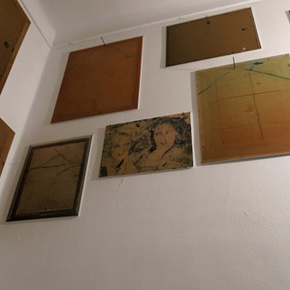
Curated Conversations
HIWAR | Conversations in Amman
HIWAR | Conversations in Amman is organized by Darat Al Funun as a residencies, exhibition and talks program to celebrate 25 years of support for the arts. The program began with the first residency in September 2013 and was followed by the second residency in October 2013. The residencies were designed to create a space of exchange and dynamic interaction between artists from the margins (or the periphery, the Global South, the former Third World).
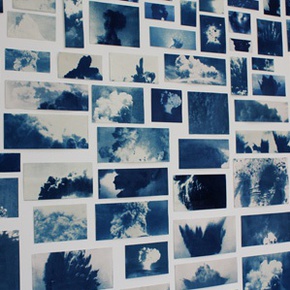
The Strangeness of Sports
Haig Aivazian’s multi-piece installation FUGERE at Sfeir-Semler, Hamburg
There is something deeply disturbing about the work of the Lebanese artist, curator, and writer Haig Aivazian. This realization does not necessarily hit the viewer at first sight, but manifests itself with a slight time lapse. Hidden strata unfold behind the surface appearance of oddly clipped images and model-like objects, leading into highly volatile territory. Aivazian is not a creator of solitary statements, more a compiler of visual and conceptual bits and pieces, where the whole has more impact than its parts.
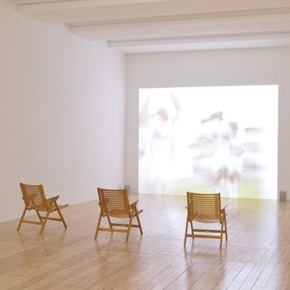
Everywhere But Now
The 4th Thessaloniki Biennale
In this review, Stephanie Bailey looks at the central exhibition of the 4th Thessaloniki Biennale, Everywhere But Now, and explores some of the messages that are being articulated in the curatorial by Adelina von Fürstenberg. Running from 18th September 2013 through to 31st January 2014, the exhibition includes 50 artists from 25 countries, with a regional focus that concentrates on the Mediterranean while also expanding beyond it.
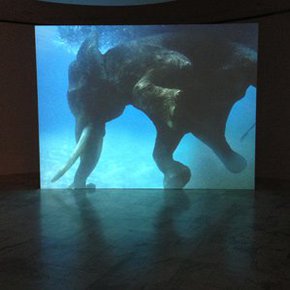
Curating Conflict in Art
An I for an Eye and Death of a Cameraman
Jacques Rancière argues: Signification as conveyed in art is produced by its surroundings. There is no formula to impose one meaning over another as time, language, social issues, and subjective experiences are some of several factors that constantly reshape meaning. Political signification in artworks or curatorial projects, that are both motivated by particular social issues, is linked to the socio-political situation and the larger surrounding environment. This context is useful to consider the exhibition An I For An Eye, curated by Stamatina Gregory and Andreas Stadler at the Austrian Cultural Forum, and Death of a Cameraman, curated by Martin Waldmeier at Apexart, both in New York.
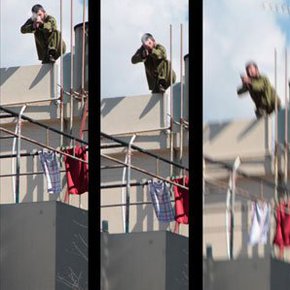
Murder in Three Acts
Alsi Çavuşoğlu at Delfina Foundation, London
Coagulated blood, missing body parts, brilliant deductions, traces of evidence, wild accusations and murder – such is the stuff of Alsi Çavuşoğlu's playful pastiche of popular TV crime dramas, Murder in Three Acts (2012), which was on show (11th and 25th October 2013) throughout the raw spaces of the Delfina Foundation's London space currently in mid-renovation. The films, divided into three acts, were shown in three rooms across two floors of the Delfina building, just one year after they had been originally shot on location at the Frieze Art Fair 2012 as part of Frieze Projects. The screening of the films during this year's Frieze Week, at the home of one of its commissioners, thus marked the closing of a neat spatial and temporal circle.
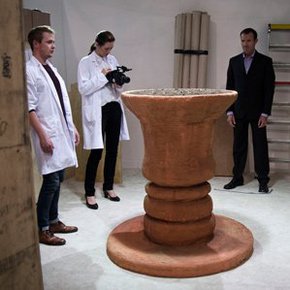
Dancing with Barbarians
The 13th Istanbul Biennial
The 13th Istanbul Biennial went by the title Anne, Ben Barbar Miyim?/Mom, Am I Barbarian? It was a heartfelt and genuine attempt by its curator, Fulya Erdemci, to grapple with what can only be deemed an impossible task. From the outset, Erdemci had proposed that her exhibition would 're-think the concept of multiple publics, and the public domain as a political forum.' However, as the events surrounding the fight for Gezi Park began in May 2013, many continued to utter that Erdemci's proposal had already manifested publically. As the activism in Istanbul continued, rumours spread far and wide about the biennial's content and structure. Up until I arrived in Istanbul for the official preview, there was no artist list to be found online, and the exhibition's press release did not so much as hint at a suggestion of what the biennial's main exhibition might include by way of art.
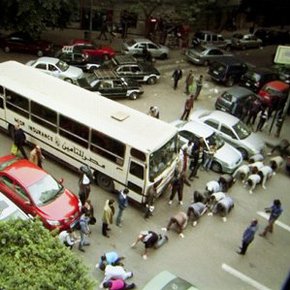
Freedom of Expression
FIAF’s 2013 World Nomads Tunisia Festival
Tunisia's artists swooped into New York during the French Institute Alliance Francaise's (FIAF) fifth edition of their biennial festival celebration of twenty-first century transculturalism: the World Nomads Festival. The impact of the institute's month-long May festival aroused an enthusiastic curiosity for this North African country, its culture heretofore little-known in America. In New York, to meet this demand, the FIAF set an international festival precedent of praiseworthy and most unusual quality. Light was cast on Tunisia's recent explosion of creativity and innovation, following the country's seminal role in the 'Arab Spring' two years ago.
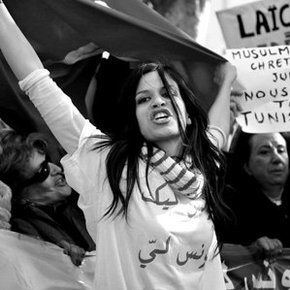
Watching the Lonely Crowd
/si:n/ Festival of Video Art and Performance, Ramallah
The Lonely Crowd is the third edition of the /si:n/ Festival of Video Art and Performance, which was initiated in 2009 by the French-German Cultural Centre, A.M. Qattan Foundation, and Les Instants Video Numeriques et Poetiques. /si:n/ is the first Palestinian festival dedicated to video art and performance, and adapts new curatorial strategies and more refined institutional partnerships and cooperation. In this respect, The Lonely Crowd marked an important development in the festival's short history - this year signalled a more defined identity, in part due to a fewer number of partnering institutions: those mentioned above, with the addition of the Khalil Sakakini Cultural Centre. Two main local curators from within the partnering institutions were also appointed: the Sakakini Centre's director, Lara Khaldi, and Reem Shilleh from the Qattan's Culture and Art Program.
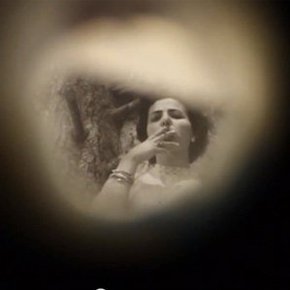
Long ago, and not true anyway
Waterside Contemporary
In an unassuming shop front gallery in East London, nestled amongst convenience stores, boarded up commercial units and social housing, one will find Long ago, and not true anyway (5th September – 26th October 2013), a group exhibition at Waterside Contemporary. The gallery space's location in Hackney – one of London's most ethnically diverse boroughs – informs the context of the exhibition. As exhibition materials state, five artists and artist collectives – Joana Hadjithomas and Khalil Joreige, Rabih Mroué, Libia Castro and Ólafur Ólafsson, Mekhitar Garabedian and Slavs and Tatars – have been brought together to ruminate on the 're-assembling of historical narratives affected by migrations, invasions [and] economic interactions…'
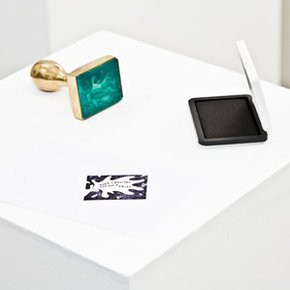
On the set of the 55th Venice Biennale
The Encyclopedic Palace
Is it pure coincidence that the 55th Venice Biennale, the world's most nationalistic 'fair' for visual culture, opened only a couple of weeks before the 2013 G8 summit took place in Northern Ireland? The play of global power relations for most cultural tourists visiting the Venice Biennale may at first seem secondary but the endless thoroughfare around which national pavilions are deserving enough of one's time amidst the 88 national participations, 47 collateral events, and the main exhibition curated by Massimiliano Gioni, most certainly illustrated a synonymous relationship between art, its markets and global power relations.
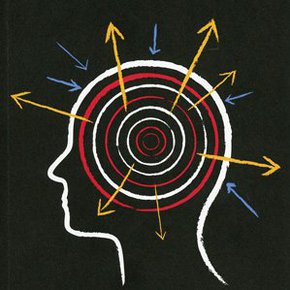
Two Responses to Peeping Tom Digest ♯3: Beirut
When a colleague handed Omar Kholeif a copy of Peeping Tom's issue focused on the Beirut art scene, he felt both confusion and excitement. There, on the cover, were listed the names of virtually every single collaborator that he had ever had the good fortune to work with as an editor. Familiar names consisted of friends, colleagues, old and new, and the cover said it all: Beirut is, and has for the last decade been the heart of the contemporary art scene in the Arab world.
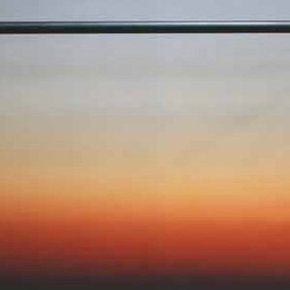
Re-Framing Modernism
Saloua Raouda Choucair, Ibrahim El-Salahi and Meschac Gaba at Tate Modern
An intriguing line of inquiry emerges from three exhibitions currently on show at Tate Modern. There is the exhibition of works by Saloua Raouda Choucair (born Beirut, 1918) showing to 16 October 2013, a retrospective of 'Visionary Modernist', Ibrahim El-Salahi (born Sudan, 1930) to 22 September 2013, and a presentation of Meschac Gaba's (born Benin, 1961) expansive, unfolding and ongoing installation known as The African Museum of Contemporary Art (showing to 22 September 2013), inaugurated in 1997 (and complete with online portal).
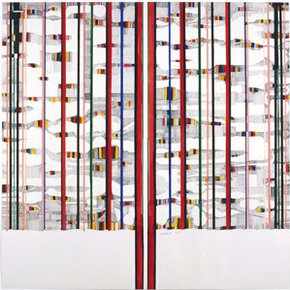
Trials of Arab Modernity
Literary Affects and the New Political by Tarek El-Ariss
Trials of Arab Modernity: Literary Affects and The New Political by Tarek El-Ariss is a sequence of seven chapters that connect Arabic literary texts from the 1800s to the present day. Through these examples he discusses and critiques the Arab experience in relation to modernity. He does not employ the expected models such as colonial discourse or Orientalism. Rather, the book traces a lineage of affects – emphasis here is on bodily experiences – that are the outcome of the subject's or protagonist's encounter with modernity, while referencing contemporary philosophy and social theory. Focusing on the body as a site for transforming the master narrative of both European and Arab modernity, El-Ariss aims the spotlight at the affects of those encounters.
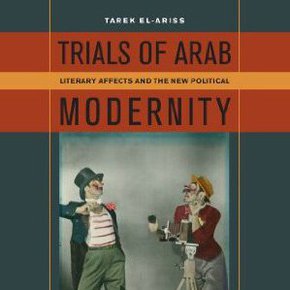
Points of Departure
Institute of Contemporary Art, London
Points of Departure (26 June 2013 – 21 July 2013) was that exceptionally rare thing: an exhibition – with talks and screenings but no bibliographic supports – of visual art works by Palestinian artists and works responding to Palestine by British artists taking place within a major British institution: the ICA. This is a cause for celebration, however belated, and necessarily without consequence in terms of the work itself.
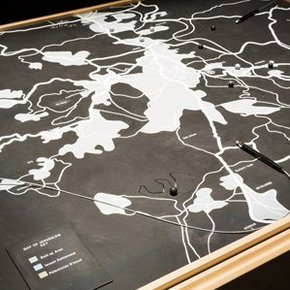
Tea With Nefertiti
The Making of the Artwork by the Artist, the Museum and the Public
The German-Lebanese curatorial partners Till Fellrath and Sam Bardaouil, who are the founders of the curatorial platform Art Reoriented, are no strangers to Doha's Arab Museum of Modern Art, Mathaf. In 2010, they curated the institution's inaugural exhibition Told | Untold | Retold showing contemporary Arab artists whose work, in some way or another, focused on the theme of storytelling. Their second venture at Mathaf, Tea with Nefertiti: The Making of the Artwork by the Artist, the Museum and the Public, went into a completely different direction, though the interest in narrative, be it (art) historical or other remained intact.
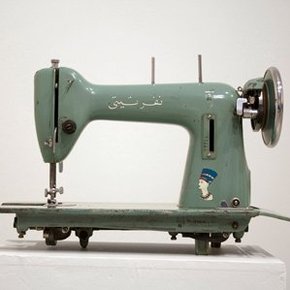
Art After War
Kuwait’s National Works at the 55th Venice Biennale
Under the patronage of the National Council for Culture, Arts and Letters, Kuwait's first pavilion at the 55th Venice Biennale features the work of two acclaimed Kuwaiti artists: sculptor Sami Mohammed and visual artist and professor Tarek Al-Ghoussein. Through its focus on structures of grandeur, National Works examines the development of art and nation in Kuwait post-independence. Curated by Ala Younis, the pavilion also raises critical questions: how do buildings or sculptures convey grandeur? Is it about size or subject? And how do these structures interact with individuals?
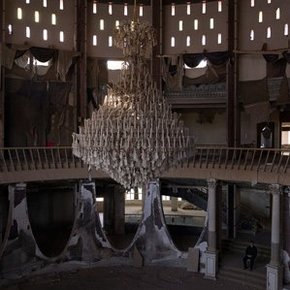
Future Generation Art Prize 2013
Palazzo Contarini Polignac, Venice
The PinchukArtCentre's Future Generation Art Prize is an international accolade initiated by the Victor Pinchuk Foundation in 2009, and seeks to identify, discover and support a future generation of artists, up to the age of 35. The second edition, which took place in 2012, awarded the Main Prize to British artist Lynette Yiadom-Boakye, with Special Prizes handed to Jonathas de Andrade (Brazil), Marwa Arsanios (Lebanon), Ahmet Öğüt (Turkey) and Rayyane Tabet (Lebanon).
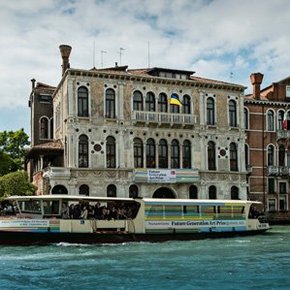
Modern Iraqi Art: A Collection
Meem Gallery, Dubai
Bucking the usual Dubai summer trend of exhibiting up-and-coming artists or pulling work from the inner bowels of gallery storage, Meem Gallery instead chose to present a group exhibition of exceptional art historical depth in their current show, Modern Iraqi Art: A Collection. Although the title deceptively implies that the entire exhibition is dedicated to Modern Iraqi Art, in fact, there are quite a few contemporary artists presented in this large group exhibition that spans works from the 1950s to the 2000s.
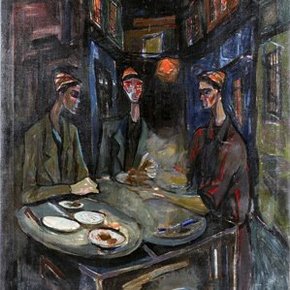
The Business of Culture
Profiles: Collecting Art in Lebanon at AUB Gallery, Lebanon
In this review, Roy Dib discusses Profiles: Collecting Art in Lebanon (from 5 April, until 24 August 2013), an exhibition staged at the American University of Beirut's art gallery. The show examines practices of art collection and art patronage in Lebanon today, running in parallel with another exhibition Art In Labor Skill/ Deskilling / Reskilling (until 27th July 2013) at the AUB Byblos Bank Gallery, ADA Dodge Hall, AUB Campus.
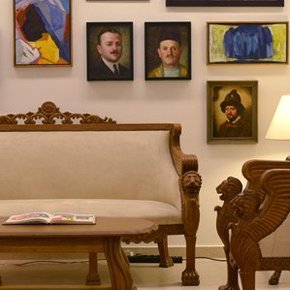
Home Works 6
Tinkerings on the Instable Present Tense
Roy Dib considers the significance of Home Works 6, held in Beirut from 14th to 26th May 2013, during a time when the Arab world is going through a transitional period that has been dubbed as the 'Arab Spring 'by some, and the 'Arab Fall' by others. For Dib, both are arguably outdated terminologies. Nevertheless, they remain significant idioms of the time, where individuals and societies are trying to make sense of an unsettling present tense.
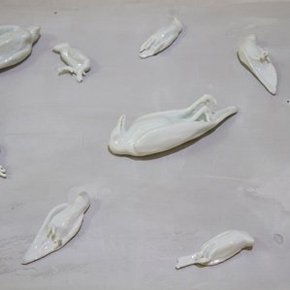
Welcome to Iraq and Otherwise Occupied
Iraq and Palestine at the 2013 Venice Biennale
Daniella Rose King considers two contributions to the 55th Venice Biennale by two rabic speaking nations with separate trajectories of contemporary art production, and whose names conjure memories of international interference, occupation and conflict. For King, Welcome to Iraq, and Otherwise Occupied, the titles of the Iraq and Palestinian exhibitions respectively, 'both play with linguistics, in a bid to subvert stereotypes or associations with these locations.' This review reflects on whether both exhibitions suceeded.
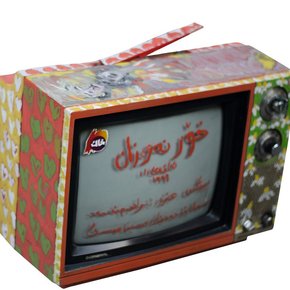
Covering One's Back
Gezira Art Center, Cairo
Jenifer Evans reviews Covering One's Back at the Gezira Art Center in Cairo, which was on show from 7th May to 23rd May 2013. Curated by Ala Younis and Maha Maamoun, the exhibition featured eight artists or artists groups – Atfal Ahdath, Yasser Alwan, Goerge Awde, Goran Galić & Gian-Reto Gredig, Raphael Hefti, Hassan Khan,Taiyo Onorato & Nico Krebs and Heini Stucki.
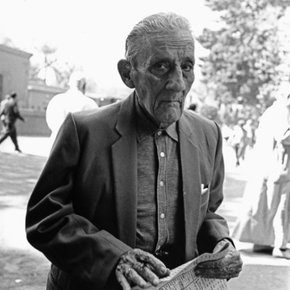
Trade Routes / Conflicted Memory
Hauser & Wirth / Alan Cristea Gallery: A Spectrum Review
Two recent exhibitions, just a stone's throw from each other in London's West End, presented a selection of artists with overlapping social intents and geographies. Hauser and Wirth's Trade Routes (3rd May - 27th July) featured 15 artists, and took Antiquity paths from east to west as their rationale for understanding the contemporary implications of the exchange of goods, culture and ideas across national boundaries. Alan Cristea Gallery's exhibition Conflicted Memory (29th April - 1st June) assembled eight female international artists whose experience of conflict zones reference the act of remembering in their artistic practices.
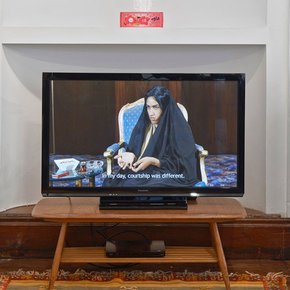
Birds Eye View Festival 2013
Celebrating Arab Women Filmmakers
This year's Birds Eye View Festival (3rd - 10th April, with a special preview event for International Women's Week on 8th March) brought us a series of features, documentaries, short films, panel discussions and director Q&As, as well as silent films with commissioned live scores. Under the subtitle 'Celebrating Arab Women Filmmakers', the 2013 incarnation sought to highlight the recent work of women from the Arab world; from directors to writers, artists, producers, actors and musicians and the various contributions they have made to cinema.
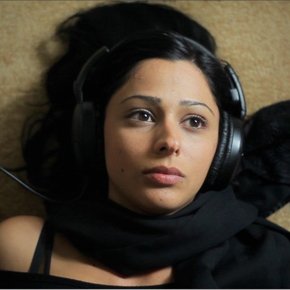
Noise in the Courtyard
Sharjah Biennial 11 – Re:emerge, Towards a New Cultural Cartography
Writing a review of the 11th Sharjah Biennial Re:emerge, Towards a New Cultural Cartography (13th March to 13th May 2013) is a schizophrenic affair. On the one hand, such a large curatorial undertaking deserves to be critiqued purely on its own merit. On the other hand, the black page of Sharjah's Biennial 10 – when Sharjah Art Foundation director Jack Persekian was unceremoniously sacked over Mustapha Benfodil's censored and removed piece Maportaliche/It Has No Importance – still looms heavily over Sharjah Biennial 11.
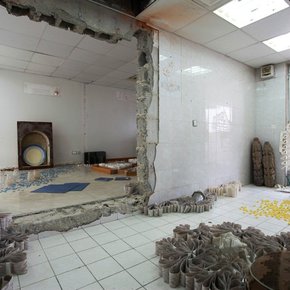
SEEP
Nasrin Tabatabai & Babak Afrassiabi at Chisenhale Gallery
When contemporary art theorist Irit Rogoff introduced 'relational geographies', she proposed the idea of taking two seemingly disparate things and drawing out connections between them that may not have been immediately apparent. It is a view that invokes, to a certain degree, French philosopher Gilbert Simondon's view of an 'associated millieu', in that individuals and technical objects are to be understood in terms of a certain field of pre-individuality and a subsequent emergence from that. In this, a field of relation is potenialised, with any tensions between such associations tempered by the mode of being itself. In the end, the 'associated milieu' is a connecting force – like a geography mapping out what was once a gap.

CAMPING AND TRAMPING THROUGH THE COLONIAL ARCHIVE
A Talk and Screening by Shabbir Hussain Mustafa
Archive fever came back to Hong Kong this Spring. Shabbir Hussain Mustafa, curator of the National University of Singapore Museum, recently presented a lecture titled 'Camping and Tramping through the Colonial Archive' at Para/Site Art Space (27th March 2013) as part of his residency initiated by the non-profit in Hong Kong. In the talk, Mustafa focused on exhibitions he has been involved in, including Camping and Tramping through the Colonial Archive: The Museum in Malaya (2011) and Prep Room | Things That May or May Not Happen (2012). Mustafa's lecture presented an assemblage of images and texts tied into an archival-curatorial practice through which a multitude of post-colonial discourses have been produced. The investigation explored material archives while redefining the museum as a signifier of the public sphere.
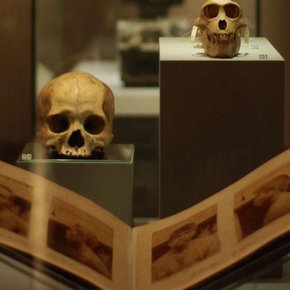
An Unconventional Angle
Mario Rizzi’s Al Intithar (The Waiting)
Since 1999, Italian artist and filmmaker Mario Rizzi has used film-based media to present works decidedly anthropocentric in nature. His work gives voice to the marginalised, underprivileged and, in particular, to refugees. After Out of Place (Best Artist Prize in Sharjah Biennial 2005), a six-screen video installation narrating the life of second-generation emigrants in Paris, Rizzi shot impermanent, which was selected for the Berlin Film Festival 2008. In this short film, Ali Akilah, a 96-year-old Palestinian doctor living in Amman but born in Lifta (a Palestinian village whose territory is now part of west Jerusalem), narrates the story of his life. The work, filmed together with the footage for a larger six-screen video installation entitled neighbours, is a reflection on the 'state of exception', a concept developed by Giorgio Agamben that views the suspension of the juridical order as the normal paradigm of government in the policy of modern states.
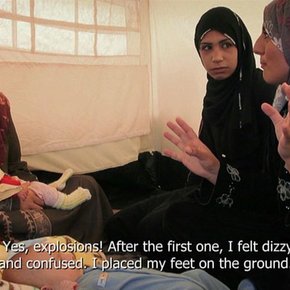
The Magic of the State
An Exhibition between Cairo and London
Among the varied and multiple interpretations of the recent, global upending of society and politics, the role of magic is one idea not heard often. Yet, it was almost two decades ago, in 1997, when anthropologist Michael Taussig brought his work of surreal, ethnographic fiction The Magic of the State to life. The text, which in many ways is grounded in Taussig's extensive fieldwork, suggests a fictive world where spirits of the fetishised and exterminated (a term artist Rana Hamadeh finds particular purchase with) bodies of the past (Africans and Indigenous peoples) possess the bodies of the living. For Taussig, this act is a metaphor for the transference between spirit and matter, revealing how the modern state is possessed by its history and by the dead. Further to this, it becomes a means to trace the 'magic' lurking in modern machinations of power and the creation of the colonial and post-colonial state.
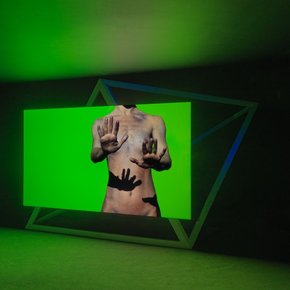
A Steady Progress of Nothingness
Basim Magdy at Newman Popiashvili
A Steady Progress of Nothingness, Basim Magdy's most recent solo exhibition, opened on 4th April 2013 at Newman Popiashvili Gallery in New York. The space, transformed into a black box, contained an assemblage of three separate works that operate in concert, bouncing information from one to the other. A video projection, a small painting and two synchronized slide projectors oscillate between fiction and the reality of Egypt's new building developments and transformations. A soundtrack (meant for the video) washes the room with the sound of rain, creating a hollow tenor in the darkened space.
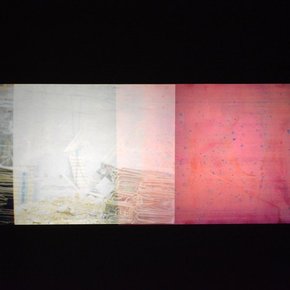
Take Me to This Place, I want to do the memories
Atfal Ahdath at Running Horse Contemporary
Atfal Ahdath is the moniker Lebanese artists Raed Yassin, Vartan Avakian and Hatem Imam, all successful as solo practitioners, choose to go by when collaborating. The name translates into 'Children of the Events', referring to Lebanon's 15 years of civil strife (1975-1990), a time when these three artists were growing up. It is no coincidence that this era is echoed in their chosen name. It can mean 'juvenile delinquents' and indeed, there is something wonderfully buffoonish, disposable and trashy in the projects of Atfal Ahdath – all qualities not immediately associated with the field of contemporary art. There is no aura or singularity bestowed on the preciousness of history and memory for these artists. On the contrary, both are makeable and reproducible.

No Place Like Home
Refraction: Moving Images on Palestine at P21 Gallery
Shaheen Merali suggests that the notion of velocity underlines art. Nowhere is this truer than in the exhibition he curated at P21 Gallery, London. Titled Refraction (19th December 2012 to 16th March 2013), the show refracted perceptions, memories, representations and images of Palestine through the prism of political repression, colonisation and its woefully forgotten history. While the 'moving' in the exhibition title encompassed both the sweep of history and Merali's inclusion of film images – both feature and documentary –, a velocity appeared to be somewhat ironic considering the focus of the art was on a people and politics frozen in time, place and memory.
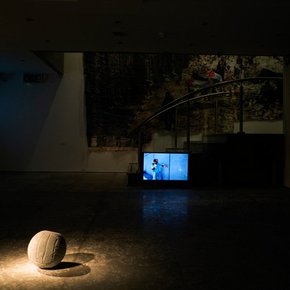
Palestinian Ghettos in White Wall Galleries
The Problem of Nationality
'It is problematic to define a work by nationality. Cinema has the potential for crossing checkpoints,' punned the Berlin-based Palestinian filmmaker Kamal Aljafari during his question and answer session at the 2012 London Palestine Film Festival (LPFF). Of course, Aljafari's comments can be applicable to any form of art or media and it is a point that comes up repeatedly when it comes to the discussion of art from a certain a national perspective. In the case of Palestine, this has been a nation represented via exhibitions more than any other country, resulting in a ghettoisation of works of art and a reductive framing to their narratives.
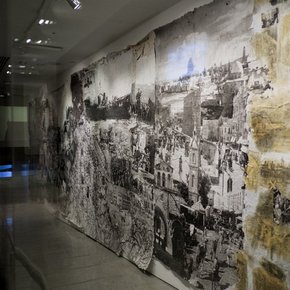
The Double Reflection
Objects in Mirror are Closer than they Appear
Objects in Mirror are Closer than they Appear, a collaboration between the Tate Modern in London and the Contemporary Image Collective, Cairo, took place in the small, darkened Tate Project Space tucked away in the corner of the Tate Modern's ground level. It was the perfect setting for an exhibition interrogating the intersections between image, narrative and perception. A collection of film and video was presented with a curatorial nod to Jean Luc Godard's The Joy of Learning (Le Gai Savoir) (1969), in which two young people meet in a dark and empty television studio for 'a series of dialogues during which they undertake a rigorous analysis of the relation between reality and film.'
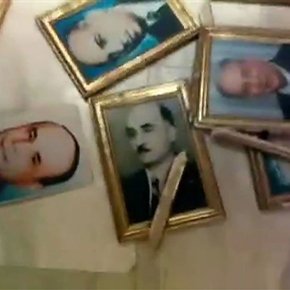
On One Side of the Same Water
Artistic Practice from Tirana to Tangier
On One Side of the Same Water: Artistic Practice from Tirana to Tangier, is a timely piece of literature in the ongoing interest surrounding the artistic and cultural scenes of the Mediterranean region. The publication's title is appropriated from an artwork by American artist Laurence Weiner, used here in order to invoke a sense of commonality, albeit just one aspect (or side) of it, which also suggests a notion of distance. In parts, this could be an accurate description of the situation as applied to the relationships that exist between the various countries and cultures around the Mediterranean Sea represented here. Yet from this publication emerges some common threads, with artists facing similar challenges in defining and dealing with their cultural heritage, while mediating issues embedded within socio-political frameworks.
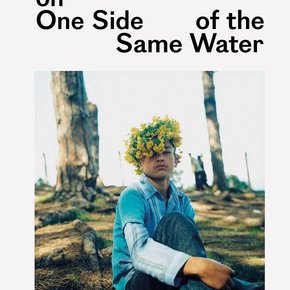
Making Universes
Khalil Rabah: Pages 7, 8, 9 at e-flux
On 2nd February 2013, e-flux's exhibition space on Manhattan's East Broadway hosted Khalil Rabah's first solo exhibition in the United States. Khalil Rabah: Pages 7, 8, 9 presented the artist's work from the last ten years in a very curious manner. The exhibition was contextualized by a symposium entitled 'Some Thoughts Regarding the Erection of the Palestinian Museum of Natural History and Humankind', a day-long program of presentations and critical discussion on Rabah's practice and the projects he is affiliated with, namely, The Palestinian Museum of Natural History and Humankind (2003-ongoing), a work that is and is not about Palestine.

